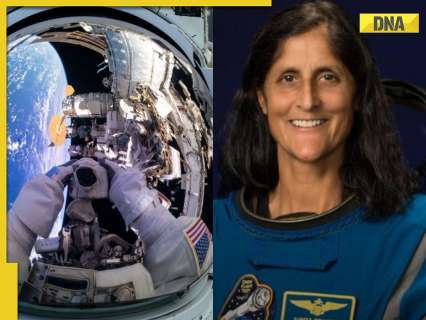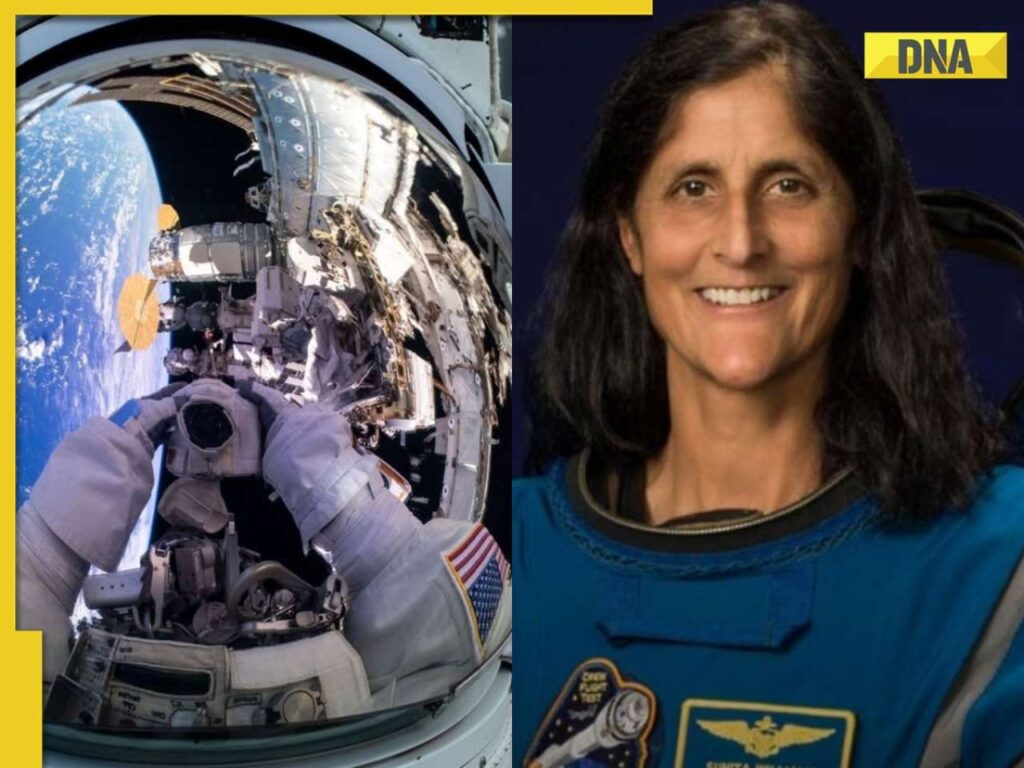
Williams not only performed crucial tasks outside the ISS but also set a new spacewalking record for female astronauts.
On January 30, 2025, NASA astronaut Sunita Williams made history while floating 423 kilometers above the Pacific Ocean. During her ninth spacewalk outside the International Space Station (ISS), she captured a breathtaking selfie, marking a memorable moment in her space journey. Accompanied by fellow astronaut Butch Wilmore, Williams not only performed crucial tasks outside the ISS but also set a new spacewalking record for female astronauts.
A View from Low Earth Orbit
At this altitude, Williams was in low Earth orbit (LEO), where the ISS operates. The space station orbits Earth at a height of about 400 to 420 kilometers (250 to 260 miles)—far above the atmosphere, where there is no air, no gravity, and extreme conditions. Here, astronauts experience microgravity, which allows them to float freely.
Although she was above the Pacific Ocean at that moment, the ISS moves at an incredible speed of 28,000 km/h (17,500 mph). Because of this speed, the station orbits Earth once every 90 minutes, allowing astronauts to witness multiple sunrises and sunsets each day.
So, when we say Williams was “423 km above the Pacific Ocean,” it simply means that at that exact moment, the ISS was flying over that region while continuing its high-speed journey around Earth.
How Do Astronauts Stay in Place During a Spacewalk?
The International Space Station (ISS) is always moving, travelling at an incredible speed of 28,000 km/h (17,500 mph). This means it completes an orbit around Earth every 90 minutes. But if the ISS is moving so fast, how do astronauts stay in one place during a spacewalk without being left behind?
Why Don’t Astronauts Get Left Behind?
Even though the ISS is travelling at high speed, astronauts move at the same speed because they are in the same orbit around Earth. This is similar to how passengers inside an airplane don’t feel its speed because they are moving with it.
How Do They Stay Secure During a Spacewalk?
Astronauts don’t just float freely in space. They use several methods to stay securely attached to the ISS while working:
Safety Tethers – Astronauts are tied to the ISS with strong cables, similar to how rock climbers secure themselves with a rope. This prevents them from drifting away. Handrails and Foot Restraints – The ISS has handrails all over its exterior, which astronauts use to hold onto while working. There are also foot restraints to help them stay stable.
SAFER Jetpack – In case of an emergency where an astronaut becomes untethered, they wear a jet-powered backpack called SAFER (Simplified Aid for EVA Rescue). This allows them to control their movement and return safely to the ISS. Do Astronauts Rotate in Space?
If an astronaut pushes off in the wrong direction, they might start slowly spinning, as there is no air resistance to stop them. That’s why astronauts practice their movements carefully before stepping outside the ISS. They can use small hand adjustments or tools to stabilize themselves in space.
Sunita Williams Sets a Spacewalking Record
During this spacewalk, Sunita Williams achieved a historic milestone by surpassing former NASA astronaut Peggy Whitson’s record for the most spacewalking hours by a female astronaut.
With this spacewalk, Williams has now accumulated 62 hours and 6 minutes of spacewalking time, placing her fourth on NASA’s all-time list. This achievement was part of the 92nd U.S. spacewalk, further solidifying her status as one of the most experienced astronauts in extravehicular activities.
What Did Sunita Williams and Butch Wilmore Do During Their Spacewalk?
During their spacewalk, Sunita Williams and Butch Wilmore performed important tasks outside the International Space Station (ISS), including:
Removing old equipment from the station’s exterior
Collecting surface material samples from areas near the ISS’s life support system vents, particularly from the Destiny Laboratory and the Quest Airlock.
These samples will be analyzed to understand how space conditions affect the ISS over time, ensuring the station remains in optimal condition for future missions.
Understanding the Destiny Laboratory and Quest Airlock
Two crucial sections of the International Space Station (ISS) played a key role in this spacewalk:
1. Destiny Laboratory
Also known as the U.S. Laboratory Module, Destiny is the main science lab for American research aboard the ISS. It was launched in 2001 and is used for scientific research in microgravity. Astronauts conduct experiments in medicine, biology, physics, and technology to understand how space affects humans and materials. It plays a key role in developing new technologies for future Moon and Mars missions.
2. Quest Airlock
The main entry and exit point for U.S. spacewalks (EVAs) from the ISS. It was launched in 2001 and allows astronauts to safely enter and exit the station for spacewalks. It has two sections:
- Equipment Lock – Where astronauts prepare and store their spacesuits.
- Crew Lock – The section that opens into space for spacewalks.
Quest is also used to release small satellites and test how different materials react in space. Both Destiny and Quest are critical for space research and station maintenance, helping astronauts explore and prepare for the future.
The Importance of Studying Space Samples
By analyzing the material samples collected during the spacewalk, scientists can determine if tiny living organisms (microorganisms) are escaping from the ISS. Researchers will also study how many are present and how far they can travel in space.
This research is important because it will provide insights into how life might behave on other planets, such as the Moon or Mars. It will also help improve safety measures for astronauts on long-duration space missions.
What’s Next for Sunita Williams and Butch Wilmore?
Williams and Wilmore were originally scheduled to return to Earth in June 2024 after a short one-week mission. However, a technical issue has caused repeated delays. Now, they are expected to return by late March or possibly April 2025. Until then, they continue their important research and maintenance work aboard the ISS.
Conclusion
Sunita Williams’ spacewalk and stunning selfie are a testament to human exploration beyond Earth. As she continues her mission aboard the ISS, her record-breaking spacewalk hours mark an important milestone in space history.
With her dedication and achievements, Williams is not only contributing to vital space research but also inspiring future generations of astronauts who will one day travel to the Moon, Mars, and beyond.
(Disclaimer: The views expressed above are the author’s own and do not reflect those of DNA)
(The author of this article is an award-winning Science Writer and a Defence, Aerospace & Political Analyst based in Bengaluru. He is also Director of ADD Engineering Components, India, Pvt. Ltd, a subsidiary of ADD Engineering GmbH, Germany. You can reach him at: [email protected])

